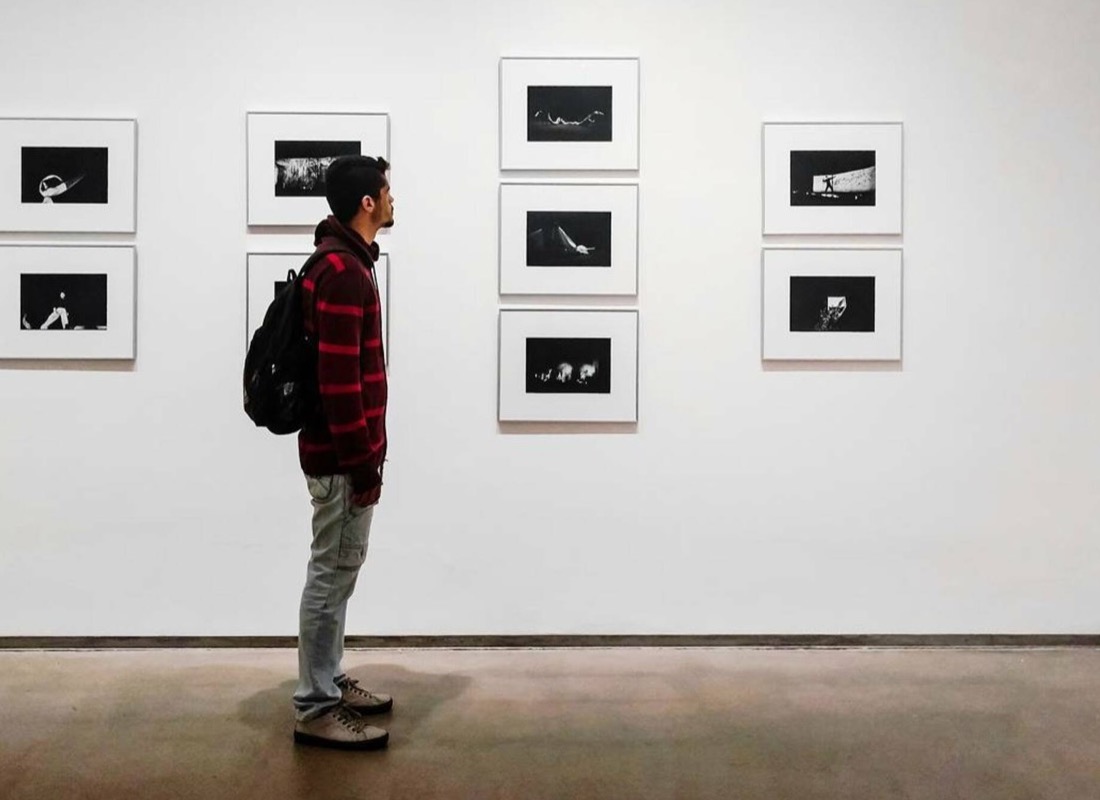
If you work in the arts, the chances are that you live and breathe art too and may even dream of owning your very own original artwork. However, with relatively low salaries compared to other sectors, slow pay progression, and increased living costs (ArtsPay, 2018), it can sometimes feel like the last thing you should be spending your hard-earned cash on is an original piece of art. Sound familiar?
Well we want you to know that buying art is within your reach. We’ve prepared these tips to help you buy your very own piece of art - even on an arts salary - for you to display proudly at home.
1. Visit galleries and Art Fairs
First things first, allow yourself the time to work out what you like by visiting lots of different galleries and art fairs.
We know it can sometimes feel intimidating to enter a commercial gallery space, but galleries love to talk about the artists that they represent and will be able to give you a deeper insight into their artists’ practice. Own Art member galleries go through an application process which assesses the extent to which they are friendly and approachable, so you can feel confident that you’ll get the right level of advice and support from them.
If you have a particular style or specific requirements in mind, let the gallery know what you are looking for. Once a gallery knows what you like, you’ll always be at the forefront of their mind when something matching your interests becomes available. Signing up to galleries’ mailing lists is also a great way of keeping up to date with their news and exhibitions, and you’re also likely to receive invitations to Private Views, and sometimes even special offers.
Remember: walking into a gallery does not mean you have to commit to a purchase there and then. Take time looking, make notes on what you like, and don’t rush a purchase.
2. Explore online
Following your favourite galleries and artists on Instagram is a great way of discovering new art, checking out the latest developments in the contemporary art world, and seeking inspiration outside of a regular visit to a gallery. If you’re interested in a particular art form, look up a specific hashtag to see if anything you like pops up. And don’t forget to check out art magazines or art-related accounts on Instagram that promote contemporary art, such as:
3. First-time buyer?
The most important thing to remember is that there is no right or wrong type of art to buy if you are a first-time buyer. However, limited-edition prints tend to be a good starting point as they typically fall within a lower price range and can therefore be more affordable.
4. Spread the cost
As with any purchase, it’s always a good idea to set a budget so you know what you can comfortably spend, but remember, there are other ways to pay. With Own Art, you can spread the cost of contemporary art and craft from £100 to £25,000 over 10 months with an interest-free loan. This means that you can choose more or less any work you like by a living artist from as little as £10 a month. Own Art can also be used as a ‘shopping basket’ to buy multiple pieces, or it can be used as a part payment for more expensive purchases, giving you the freedom to look outside of what you thought was your original budget. You can even include the cost of framing and delivery in your Own Art loan.
We work in partnership with a network of over 300 Own Art member galleries, Art Fairs, Arts Council England, Creative Scotland, and Arts Council of Northern Ireland to make it easy and affordable for everyone to own high quality, contemporary art and craft.
Once your loan application has been approved by the gallery, you can take your artwork home straight away or have it delivered. You only start paying your first monthly instalment 4 weeks later!
5. Think about the practicalities
Before buying a piece of art, it’s important to consider its size and where it will go once you get it home. Most artwork labels should show the size of the work, but don’t be afraid to ask the gallery for measurements if you need help assessing its suitability for your home.
If you are buying an unframed work, talk to the galley about framing options as they can give you advice on the best way to protect and show off your new piece of art. If it’s too large, bulky, or fragile to carry home safely, the gallery may be able to organise delivery for you too.
Lastly, don’t forget to insure your artwork! Sadly, accidents do happen so check that your home or contents insurance provides appropriate cover for your artwork. If not, you may need to take out specialist insurance – It’s worth it!
6. Ask for a Certificate of Authenticity
Once you have purchased your new artwork, the gallery should be able to provide you with a Certificate of Authenticity that has been signed by the artist and includes the date and edition details of the work. This acts as an official document that protects the artist’s work and proves your work is genuine and authentic. It’s also a handy way of proving an artwork’s provenance and confirming you as the rightful owner.
7. Buy what you love
It may sound obvious, but you should always buy art that you love and that speaks to you personally. Whatever you do, don’t be tempted into buying art as an investment! Unless you have in depth and specialised knowledge to recognise investment-worthy works of art that will make a profit, then there really is no point going that route. Buy art simply because you, and only you, can see yourself enjoying it and living with it for a long period of time. Buy art simply because you enjoy it! It’ll be part of your home and your every day, and hopefully the proud start to an amazing collection!
TOP TIPS!
- Renting? Same! But don’t let that stop you either! You can get yourself some picture hanging strips for damage-free frame hanging and no dent in your deposit.
- Not a lot of wall space? Prop large works against walls and smaller works on shelves or ledges, or in any nook that can do with some decoration.
- Create a feature wall by grouping together your collection! You can spruce this up with some easy peel, non-permanent wallpaper too!




.0af71f.jpg)
.ec8cc4.png)